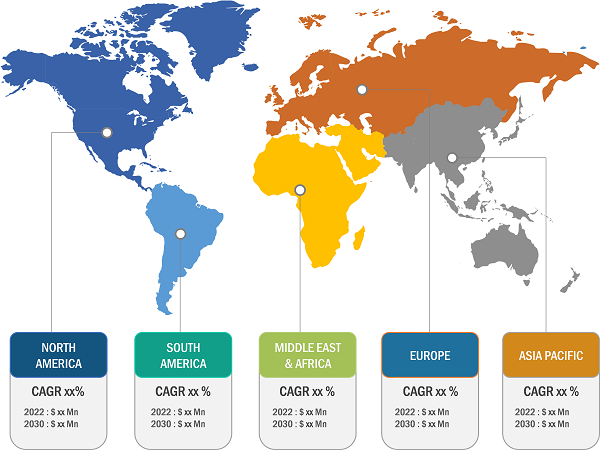Magnetic Resonance Imaging (MRI) Segment Drives Noninvasive Traumatic Brain Injury Diagnostic Equipment Market Growth
According to our new research study on “Noninvasive Traumatic Brain Injury Diagnostic Equipment Market Forecast to 2031 – Global Analysis – by Techniques, Noninvasive ICP, Device, and End User,” the noninvasive traumatic brain injury diagnostic equipment market size is expected to grow from US$ 1.70 billion in 2024 to US$ 3.91 billion by 2031; the market is anticipated to register a CAGR of 12.7% during 2025–2031. The surging number of traumatic brain injuries, a shift toward noninvasive technologies, technological advancements, and AI integration, drive the noninvasive traumatic brain injury diagnostic equipment market growth.
Noninvasive TBI diagnostic equipment encompasses tools and technologies that identify, evaluate, and monitor brain injuries without penetrating the skull or disturbing the body's tissues. The devices utilize technologies such as EEG, NIRS, CT, MRI, ultrasound, and eye-tracking to detect signs of trauma, including bleeding, swelling, or functional interruption. These diagnostic tools are at the forefront of concussion, mild traumatic brain injury, and other severe injury assessment, primarily in emergency, military, sports, and remote care situations. Noninvasive diagnostics facilitate quick, safe, and consistent evaluations, contributing to better outcomes through early detection and reducing the need for surgical or invasive interventions.
Noninvasive Traumatic Brain Injury Diagnostic Equipment Market, by Region, 2024 (%)
Noninvasive Traumatic Brain Injury Diagnostic Equipment Market Size and Forecast (2021 - 2031), Global and Regional Share, Trend, and Growth Opportunity Analysis Report Coverage: By Techniques (Electroencephalography (EEG), Brain-computer interface (BCI), Eye tracking and near-infrared spectroscopy (NIRS), Magnetic resonance imaging (MRI), Magnetoencephalography (MEG), Transcranial magnetic stimulation (TMS), Cerebral Metabolic Rate of Oxygen (CMRO2), Intracranial Pressure, and Others), Non-invasive ICP (Transcranial Doppler Ultrasonography (TCD), Tympanic Membrane Displacement (TMD), Optic Nerve Sheath Diameter (ONSD), Magnetic Resonance Imaging (MRI) and Computer Tomography (CT), and Fundoscopy and Papilledema), Device (Imaging devices and Monitoring Devices), End User (Hospitals and Clinics, Diagnostic Centers and Others), and Geography (North America, Europe, Asia Pacific, Middle East and Africa, and South and Central America)
Noninvasive Traumatic Brain Injury Diagnostic Equipment Market 2031
Download Free Sample
Source: The Insight Partners Analysis
The scope of the noninvasive traumatic brain injury diagnostic equipment market report includes an assessment of the market performance in North America, Europe, Asia Pacific, South and Central America, the Middle East, and Africa. Regarding revenue, North America dominated the noninvasive traumatic brain injury diagnostic equipment market in 2024.
The North America noninvasive traumatic brain injury diagnostic equipment market is segmented into the US, Canada, and Mexico. North America is leading the market due to its advanced infrastructure, high adoption rates of cutting-edge technologies, and substantial consumer expenditure on healthcare. The increasing prevalence of TBI is imposing a significant economic burden. Implementing new noninvasive diagnostic methods, such as NIRS and TCD ultrasound, has revolutionized how well clinical diagnostics function. These methods offer faster, safer, and more cost-effective alternatives to traditional ones (CT scans), enhancing the way doctors can detect and monitor injuries, which means that patients receive better treatments and their chances of recovery increase. Portable and point-of-care diagnostic solutions are increasingly advanced. BrainScope provides quick and noninvasive evaluations; hence, it can be utilized in urgent situations, where it can eliminate lengthy and costly imaging processes.
The US noninvasive traumatic brain injury diagnostic equipment market growth is attributed to surging technological advancements and a rising focus on brain health. Per the National Library of Medicine report (2025), yearly, close to 1.7 million individuals are reported to have mild traumatic brain injury (mTBI) as a result of falls, motor vehicle crashes, and assaults. Such a high occurrence highlights the need for efficient diagnostic tools. EEG-based systems, including the one by BrainScope Company, Inc., combine cutting-edge algorithms to evaluate the brain's function and structure, providing an easy and noninvasive option compared to traditional methods.
GE Healthcare Technologies Inc.; Elekta AB; Siemens Healthineers; Koninklijke Philips N.V.; Medtronic; Natus Medical, Inc.; Integra LifeSciences Holdings Corp; and BrainScope Company, Inc. are among the leading companies profiled in the noninvasive traumatic brain injury diagnostic equipment market report.
By techniques, the global noninvasive traumatic brain injury diagnostic equipment market is segmented into electroencephalography (EEG), brain–computer interface (BCI), eye tracking and near-infrared spectroscopy (NIRS), magnetic resonance imaging (MRI), magnetoencephalography (MEG), transcranial magnetic stimulation (TMS), cerebral metabolic rate of oxygen (CMRO2), Intracranial Pressure, and others. The magnetic resonance imaging (MRI) segment held the largest noninvasive traumatic brain injury diagnostic equipment market share in 2024 and is expected to grow by 2031. By noninvasive ICP, the global noninvasive traumatic brain injury diagnostic equipment market is divided into transcranial doppler ultrasonography (TCD), tympanic membrane displacement (TMD), optic nerve sheath diameter (ONSD), magnetic resonance imaging (MRI), and computer tomography (CT), and fundoscopy and papilledema. The magnetic resonance imaging (MRI) and computer tomography (CT) segment held the largest noninvasive traumatic brain injury diagnostic equipment market share in 2024 and is expected to reach its maximum by 2031. Per device, the global noninvasive traumatic brain injury diagnostic equipment market is bifurcated into imaging devices and monitoring devices. The imaging devices segment held the largest share of the noninvasive traumatic brain injury diagnostic equipment market in 2024 and is expected to remain the largest by 2031. By end user, the global noninvasive traumatic brain injury diagnostic equipment market is segmented into hospitals, clinics, diagnostic centers, and others. The hospitals and clinics segment held the largest share of the noninvasive traumatic brain injury diagnostic equipment market in 2024 and is expected to remain the highest by 2031. Geographically, the market is categorized into North America (the US, Canada, and Mexico), Europe (France, Germany, the UK, Spain, Italy, and the Rest of Europe), Asia Pacific (China, Japan, India, South Korea, Australia, and the Rest of Asia Pacific), the Middle East and Africa (Saudi Arabia, South Africa, the UAE, and the Rest of Middle East and Africa), and South and Central America (Brazil, Argentina, and the Rest of South and Central America).
Contact Us
Phone: +1-646-491-9876
Email Id: sales@theinsightpartners.com